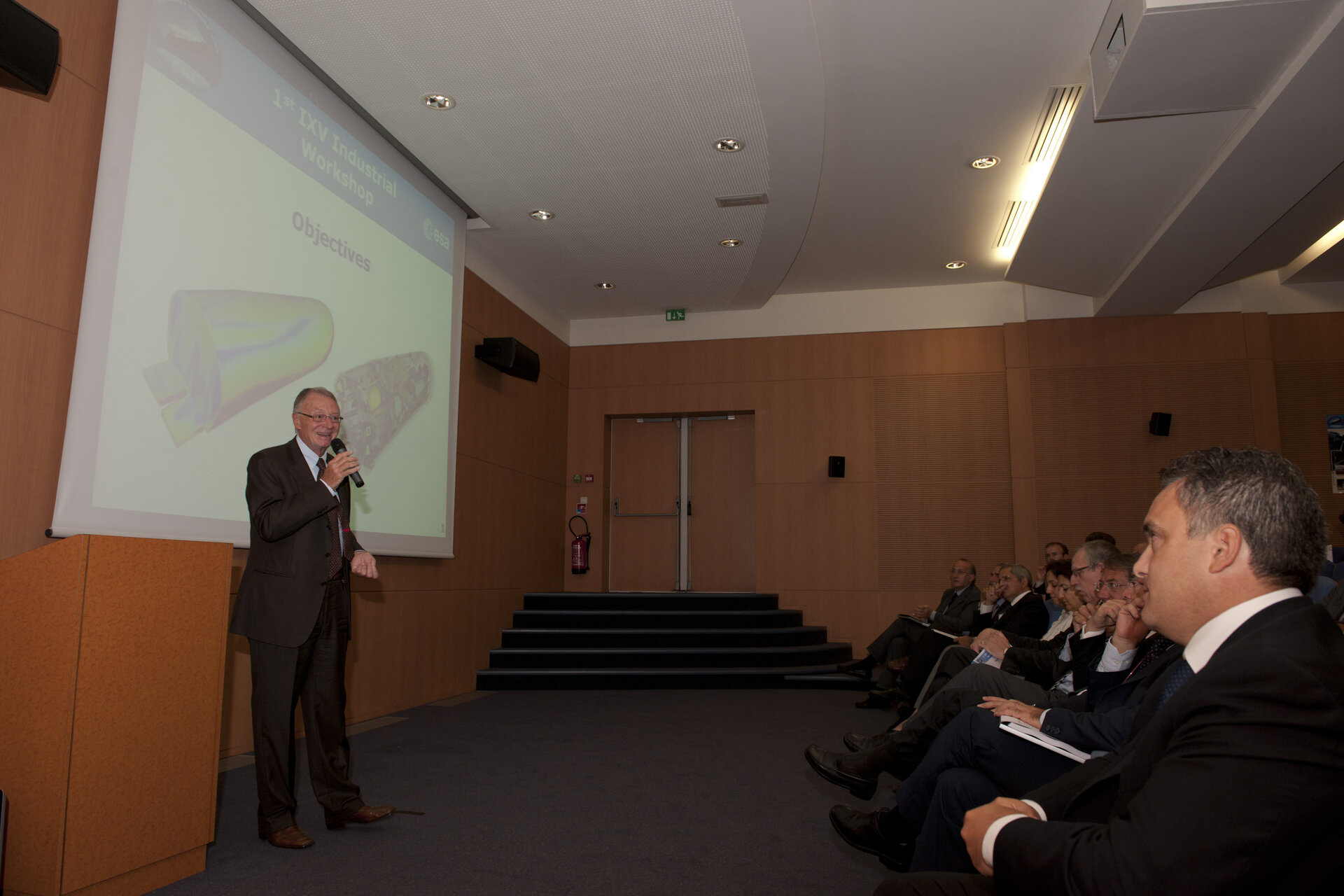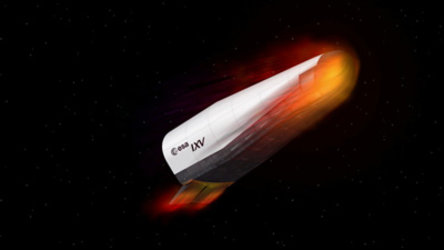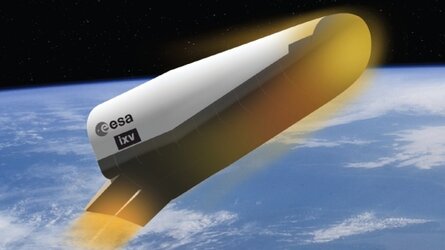New milestone in IXV development
Today, ESA held the first IXV Industrial Workshop. Thales Alenia Space and its main industrial partners presented the detailed design of ESA’s Intermediate eXperimental Vehicle. The workshop was hosted by Dassault Aviation in Saint Cloud, France.
This was the first opportunity for industry to present the hardware development activities that have been undertaken to support the proposed design solutions. During the event, technical and programmatic achievements in the IXV project were shared, and short- and long-term perspectives and future applications were discussed.
"It is a pleasure to see the industry and the research organisations involved in the IXV development so motivated to work on a reentry flight module. This industrial momentum is necessary to accomplish such a mission successfully and timely, while preparing for future challenges together,” said Antonio Fabrizi, ESA Director of Launchers.
Intermediate eXperimental Vehicle
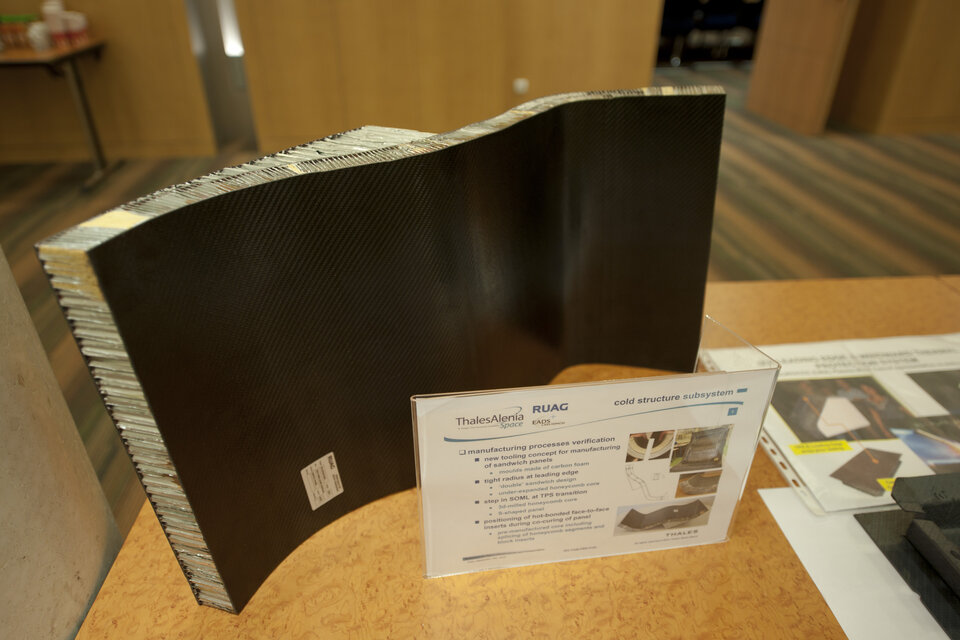
With the aim of placing Europe among the world’s space players in the strategic area of atmospheric reentry, several studies on experimental vehicle concepts and improvements of critical reentry technologies have paved the way for the flight of an experimental craft.
The Intermediate eXperimental Vehicle (IXV), under ESA’s Future Launchers Preparatory Programme (FLPP), is the step forward from the successful Atmospheric Reentry Demonstrator flight in 1998, establishing Europe’s role in this field.
The IXV project objectives are the design, development, manufacture and ground and flight verification of an autonomous European lifting and aerodynamically controlled reentry system, which is highly flexible and manoeuvrable. Among the critical technologies of interest, special attention has been paid to:
- advanced instrumentation for aerodynamics and aerothermodynamics
- thermal protection and hot-structure solutions
- guidance, navigation and flight control through a combination of thrusters and aerodynamic flaps
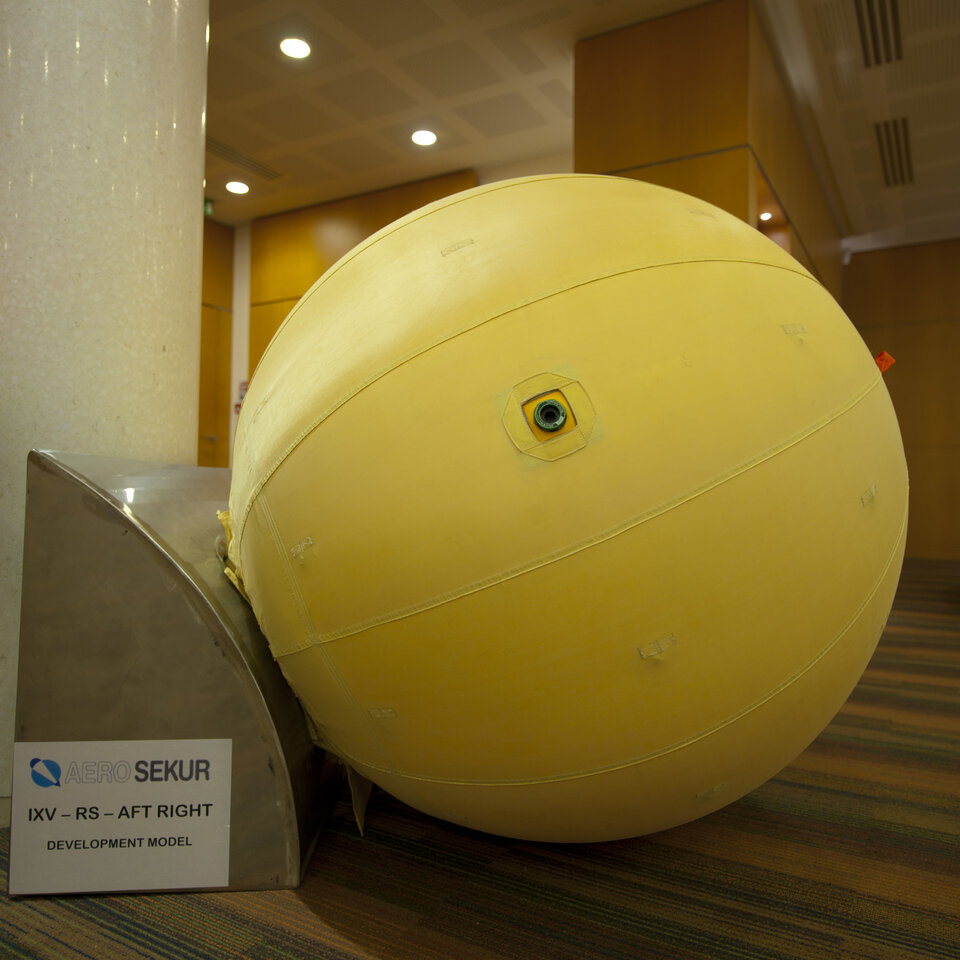
After being launched into space, IXV will return to Earth as if from a low-orbit mission, testing brand-new European atmospheric reentry technologies during its hypersonic and supersonic flight phases.
IXV is scheduled for launch in 2013 on Vega, Europe’s new small launcher, as part of the ‘VERTA’ (Vega Research and Technology Accompaniment) programme. After reentering Earth's atmosphere and being slowed by friction from 7.5 km/s, it will descend by parachute and land in the Pacific Ocean to await recovery and analysis.
As IXV flies through Earth’s atmosphere, its two-hour mission will include a set of programmed manoeuvres. This will allow scientists and engineers to test the performances of critical technologies.
The project is now well under way. The Critical Design Review will start at the end of 2010 and last three months. This will allow for the start of manufacturing in 2011, the verification and qualification process in 2012 and the final assembly and integration in 2013.
"The IXV programme is creating a robust European industrial community, which is motivated and committed to the mission’s success," said Giorgio Tumino, IXV Project Manager.
“The mission will consolidate European knowhow in atmospheric reentry with limited risk and at affordable cost."
“It may open the opportunity for future applications such as unmanned space vehicles for in-orbit monitoring and satellite servicing.”


